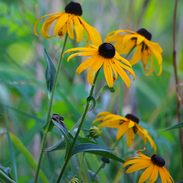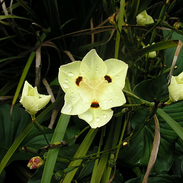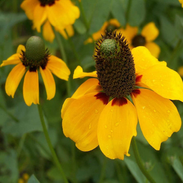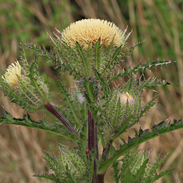Lyreleaf Sage ( Salvia lyrata), also known as cancerweed, and wild sage, Lyreleaf Sage, is considered a wild edible and medicinal plant. Flowers, stems, and leaves have been known to be prepared as food. It once served as a staple food and medicine long before Europeans arrived in North America. The leaf can be red with purple stems and the flowers can be white and purple. It generally has a pleasant fragrance that attracts pollinators like bees and butterfly, and it has a slightly minty taste.
Traditional Uses:
While specific medicinal uses of Lyreleaf Sage are not widely documented, it has a history of use in traditional medicine, particularly among Native American tribes. Some traditional uses included:
• The root was used to make salves for skin irritations, sores, and skin lesions.
• Poultice for insect stings
• Infusions for coughs, colds, and sore throats
• Syrup treatment for asthma

Potential Herbal Actions:
Scientific research is limited, but potential herbal actions may be:
• Diaphoretic: Induces sweating
• Nervine: Strengthens, calms, and tones the nervous system
• Carminative: Relieves flatulence (gas)
• Stimulant: Increases energy in the body
• Laxative: Helps increase bile movement
• Antimicrobial: Helps prevent the growth of bacteria
Cautions and Considerations:
• Limited Research: It's crucial to remember that research specifically on Lyreleaf Sage is limited, and its safety and efficacy haven't been fully established.
• Allergies: As with any plant, some individuals may be allergic to Lyreleaf Sage
• Pregnancy and Breastfeeding: Pregnant and breastfeeding women should avoid using it due to a lack of safety data.
• Sustainable Harvesting: If you plan to wildcraft Lyreleaf Sage, ensure you do so sustainably and with respect for the environment.
Disclaimer: This blog post is for informational purposes only and should not be considered medical advice. Always consult 1 with a qualified healthcare professional 2 before using any herbal remedies.













These herbs are native to the United States and grow wild. They can be found in most of our eastern and southern states (AL, AR, CT, DC, DE, FL, GA, IL, IN, KS, LA, MD, MO, MS, NC, NJ, NY, OH, OK, PA, SC, TN, TX, VA, and WV).
Do these herbs grow wild in the United States, or are they primarily cultivated?